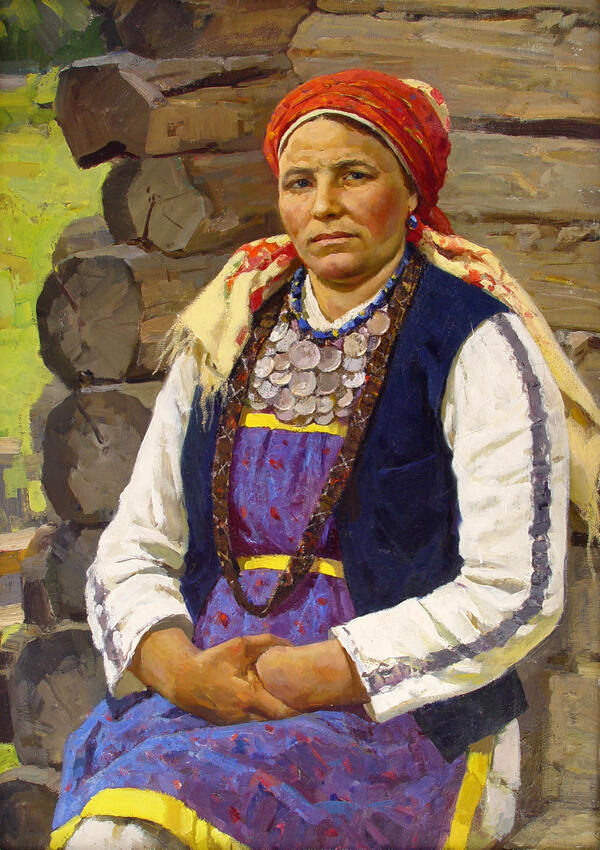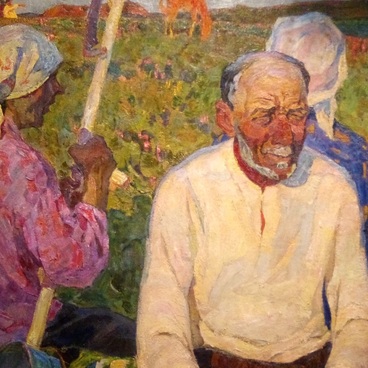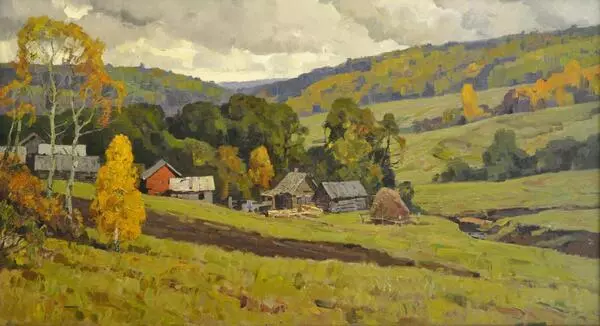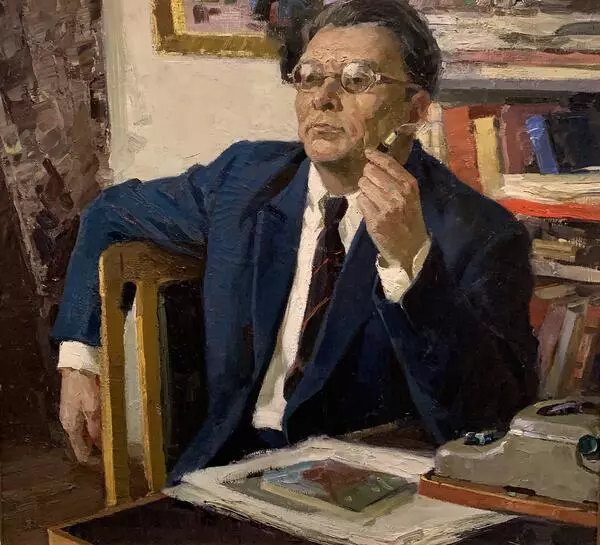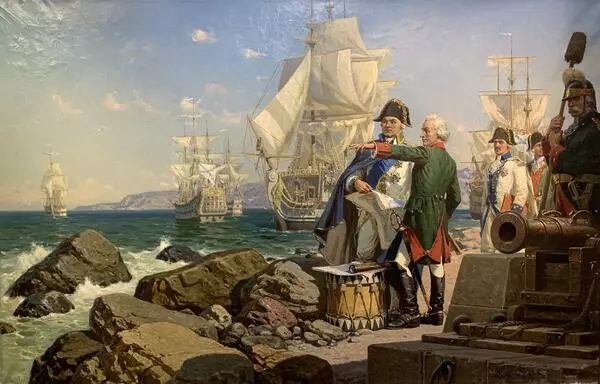All his life, the Mordovian artist Vladimir Ilyukhin searches for the image of a positive hero, because only such heroes, according to the artist, are capable of doing great things. The painter sincerely believes in justice and creation as opposed to chaos. In his paintings, this is expressed in the majestic wise calmness of the sitter who is sure of their righteousness, in the romantic and heroic power of goodness and dignity, exalting above the ordinariness that permeate the artist’s canvases.
Each portrait by Vladimir Ilyukhin testifies to the stability of the world. The images he creates seem to say, “All that was, and is, and should be, and will be.” The imperative intonation indicates that the artist does not just hope for the future, but acts for it.
We can see all this in the “Portrait of the Leading Calf Woman from the ‘Red October’ Collective Farm Nina Andreevna Kosolapova”. The heroine is depicted against the background of a log wall of an izba, symbolizing the severity and austerity of peasant life and work. This image represents a special indisputability and naturalness of the sacred laws of existence with a strict adherence to traditions.
In the masterfully rendered light-air environment, the viewer can feel the charm of the thoughtful silence and profoundly peaceful nature. The inner world of the woman echoes this state. Majestic calmness, her proud, open gaze, a slightly raised head, elegant locked hands, a noble color of her national costume with blue, white and yellow accents — all this shows the viewer her patriarchal dignity and intelligent nature.
This portrait of a Mordovian peasant woman is a magnificent picturesque monument to the spiritual values of people and their harmony with nature.
Vladimir Ilyukhin reflected the ideal of eternal Russian life, the notion of which includes village izbas, log walls, endless forests and fields, and people living in piece with this boundless expanse, with nature and honest work. Such motifs are especially widely present in Russian art of the 1960s and 1970s, for instance in the canvases by Victor Arkhipovich Ivanov, Yuri Petrovich Kugach, Arkady Alexandrovich Plastov, and Valentin Mikhailovich Sidorov.
Each portrait by Vladimir Ilyukhin testifies to the stability of the world. The images he creates seem to say, “All that was, and is, and should be, and will be.” The imperative intonation indicates that the artist does not just hope for the future, but acts for it.
We can see all this in the “Portrait of the Leading Calf Woman from the ‘Red October’ Collective Farm Nina Andreevna Kosolapova”. The heroine is depicted against the background of a log wall of an izba, symbolizing the severity and austerity of peasant life and work. This image represents a special indisputability and naturalness of the sacred laws of existence with a strict adherence to traditions.
In the masterfully rendered light-air environment, the viewer can feel the charm of the thoughtful silence and profoundly peaceful nature. The inner world of the woman echoes this state. Majestic calmness, her proud, open gaze, a slightly raised head, elegant locked hands, a noble color of her national costume with blue, white and yellow accents — all this shows the viewer her patriarchal dignity and intelligent nature.
This portrait of a Mordovian peasant woman is a magnificent picturesque monument to the spiritual values of people and their harmony with nature.
Vladimir Ilyukhin reflected the ideal of eternal Russian life, the notion of which includes village izbas, log walls, endless forests and fields, and people living in piece with this boundless expanse, with nature and honest work. Such motifs are especially widely present in Russian art of the 1960s and 1970s, for instance in the canvases by Victor Arkhipovich Ivanov, Yuri Petrovich Kugach, Arkady Alexandrovich Plastov, and Valentin Mikhailovich Sidorov.

